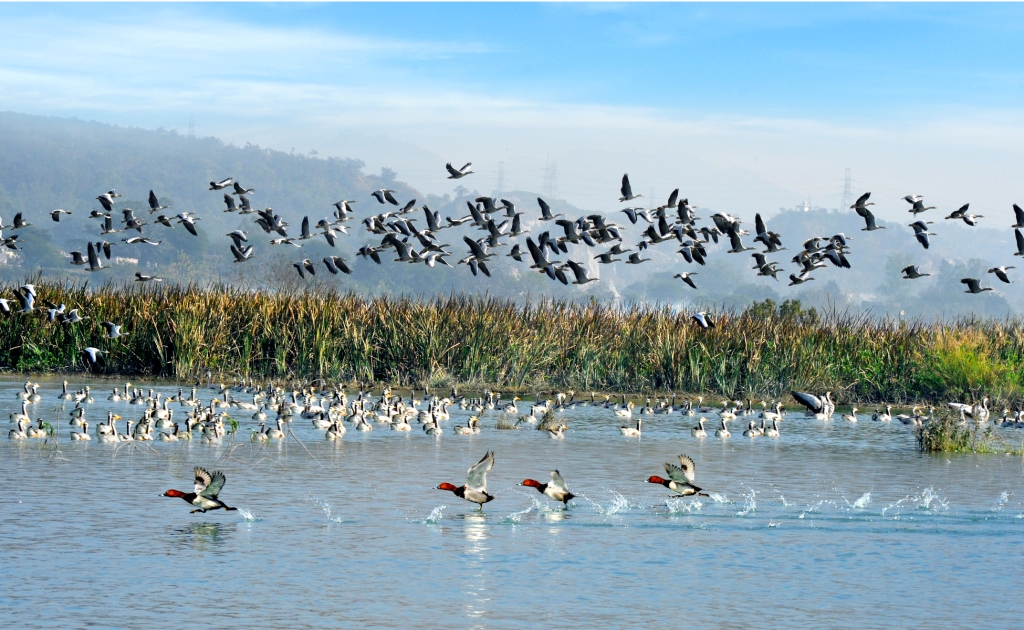
Ropar Wetland
Introduction
This reservoir at Ropar was formed due to the construction of Ropar head regulator in 1952. Before that, small headwork was constructed during the year 1882, on the right side of river Sutlej near Ropar Town so as to supply water to Sirhind Canal. With the construction of main barrage during the year 1952 water was also diverted into another canal - Bist Doab Canal. The reservoir level is maintained at Reduced Level (RL) 873.50 feet above Main Sea Level (MSL) compared to the bed level at RL 857.00 feet above MSL. Depth of water varies from half meters to 6 meters in the Reservoir area. Shallow water features exist along both the sides of the river located within the wetland area. The annual average inflow during 2000 has been reported to be 3677400 cusecs. Per day incoming water at Ropar Wetland from River Sutlej is 10215 cusecs out of which 2460 cusecs flows into the rivers downstream of Ropar Reservoir. 7346 cusecs water is released into Sirhind Canal and 490 cusecs is released into Bist Doab Canal per day. Upstream of Ropar Wetland 850 cusecs is diverted through Bhakra Main Line. The Ropar Wetland may be classified as manmade fresh water riverine and lacustrine wetland. Climatically this area falls under semi-arid zone of Punjab with mean annual rainfall of 1518 mm.
Location
: 45 Kms. in the North-West of Chandigarh
Access
: By Road
Latitude
: 30.979903
Longitude
: 76.497468
Altitude
: 275 Meter
Notification Detail
Flora
: The main species are Tectona grandis, Dalbergia sissoo, Typha angustata, Phragmites, Argemone mexicana, Withania somnifera, Acacia, Dalbergia, Delonix, Salix, Syzygium, Ziziphus, Utricularia, Ipomoea, Cyperus, Typha, Phragmites etc.
Fauna
: Ropar wetland provides habitat for variety of animals that also include some threatened and endangered species. The kinds of animals which inhabit the Ropar Wetland Conservation Reserve area are represented by a number of mammals, birds, fishes, arthropods, rotiers, crustanceans and protozoan's. Birds such as ruddy shelduck, northern pintail, common teal, mallard, gadwall, Eurasian wigeon etc. Some main species are Sambhar, Blue Bull, Wild boar, Jackal, Indian Porcupine, Small Indian mongoose, Rufous taild hare, Common Mongoose, Fruit bat, House Rat, Pale hedgehog Jungle cat, Squirrel, Rhesus Monkey, Indian Pangolin, Hog deer.
Reach Us
Images
×
Historical Importance
Ropar area has its distinct place in the District since Anglo Sikh relations and territories were defined by an agreement between Maharaja Ranjit Singh and Lord William Bentick in October, 1831 under the shade of an old Ficus Tree which existed on the bank of River Sutlej. The area is deeply associated with the socio-economic development of the State and adjoining regions.
Ropar Wetland
 Compress.jpg)








